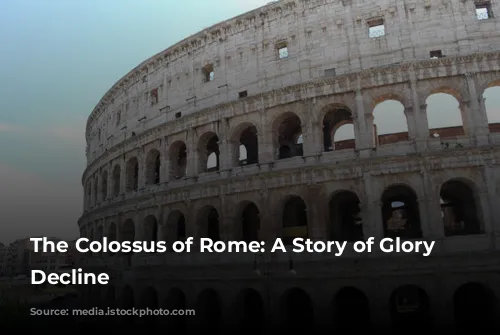The Colosseum, also known as the Flavian Amphitheatre, stands as a testament to the grandeur of the Roman Empire. This monumental structure, the largest of its kind in the ancient world, was commissioned by Emperor Vespasian of the Flavia family and inaugurated by his son Titus in 80 AD.
The opening ceremony was a spectacle of extravagance, lasting one hundred days and featuring gladiatorial combat, animal hunts, and even mock naval battles known as naumachiae. The historian Suetonius recounts the staggering number of animals slain during these festivities – a shocking five thousand.
The Colosseum’s Name and its Significance
But how did this mighty amphitheater acquire the name Colosseum? Legend has it that the name originates from a prophecy by the Venerable Bede, a medieval monk, who declared that “Rome will exist as long as the Colosseum does; when the Colosseum falls so will Rome; when Rome falls so will the world.” This prophecy might have drawn inspiration from the colossal statue of Emperor Nero, known as “the Colossus,” which stood tall beside the amphitheater before its destruction.
The Architectural Marvel of the Colosseum
The Colosseum is a marvel of engineering and architectural ingenuity. Originally adorned with gleaming travertine stone, the structure boasts an elliptical shape, designed to accommodate a massive crowd. Its four stories featured eighty arches each, with the second and third floors embellished with impressive statues.
Imagine the sheer scale of this construction – the Colosseum was built in under ten years! The Romans achieved this feat by utilizing their mastery of the arch, a technique that enabled them to effectively distribute the weight of heavy structures. The Colosseum can be viewed as a series of interconnected aqueducts, built one upon another.
From Glory to Ruin and Back: The Colosseum’s Transformation
Today, we see only a mere shadow of the Colosseum’s former glory. Three-fifths of its outer brick wall have vanished, leaving behind a skeletal framework. In the Middle Ages, when the Colosseum fell into disuse, it was transformed into a quarry of marble, lead, and iron, serving as a source of building materials for projects such as the Barberini Palace, Piazza Venezia, and even St. Peter’s Basilica.
Witnessing the Spectacles: Inside the Colosseum
The Colosseum was capable of seating a staggering seventy thousand spectators. Its tiered seating was strategically designed for optimal viewing, with different seating areas assigned based on social status. The top tiers were reserved for the common people, with separate sections for men and women. As one moved closer to the arena, the social status of the spectators increased, with the front row being reserved for the elite, including senators, vestal virgins, priests, and, of course, the emperor.
The Colosseum’s Ingenious Roof and its Gladiatorial Battles
Similar to modern sports stadiums, the Colosseum provided its audience with protection from the sun thanks to its innovative roof, known as the Velarium. This massive linen canopy was suspended by a network of ropes, winches, and wooden poles, operated by a team of one hundred sailors from the Imperial fleet. Their synchronized movements, directed by the beat of a drum, allowed them to adjust the Velarium for optimal shade.
The Arena: Where Blood and Spectacles Collide
Stepping into the Colosseum, one is met with the arena, the stage where countless spectacles unfolded. The original floor, crafted from brick and wood, is long gone, revealing the underground cellars that housed the equipment used to prepare and execute the games.
These cellars held the lifts and hoists used to bring animals and gladiators into the arena through trapdoors, creating dramatic and surprising entrances. The arena also featured a complex system of hinges and lifts that could raise and lower elaborate backdrops for the hunting events.
The Colosseum: More Than just Bloodsport
The Colosseum’s events served a dual purpose: they were both symbolic and practical. They created a connection between the citizens and their leader, providing a shared experience at important public events while simultaneously offering the populace entertainment to distract them from political issues.
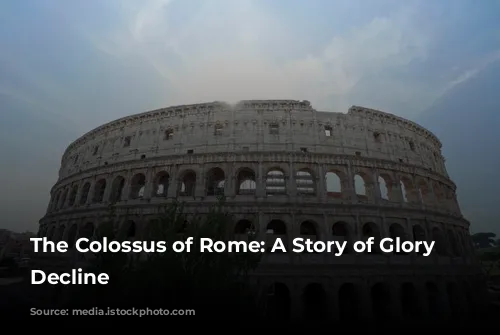
The Colosseum’s Diverse Entertainment
The Colosseum hosted a wide range of spectacles, each with its own time slot. Morning brought Venationes – exciting battles between exotic animals, and even between men and animals. Sometimes, these encounters were used as forms of public execution, leaving individuals at the mercy of ferocious beasts. The Silvae were particularly spectacular, featuring meticulously constructed scenes of forests filled with animals, often without the bloodshed.
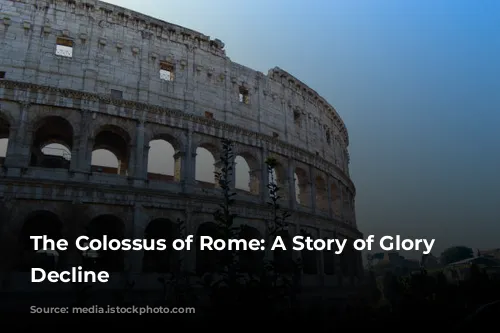
The Colosseum’s Most Popular Attraction: The Gladiators
However, the most popular spectacle of the Colosseum was undoubtedly the gladiatorial combat. Midday brought a break, allowing the arena floor to be cleaned and refreshed with sand. As the roar of the crowd intensified, accompanied by the blare of trumpets and the pounding of drums, the gladiators would enter the arena, welcomed by their fans like modern-day sports heroes. They emerged from an underground passage connected to their barracks, the Ludus Magnus, and greeted the emperor with the iconic phrase, “Ave Cesare morituri te salutant” (Hail Caesar, those who are about to die salute you).
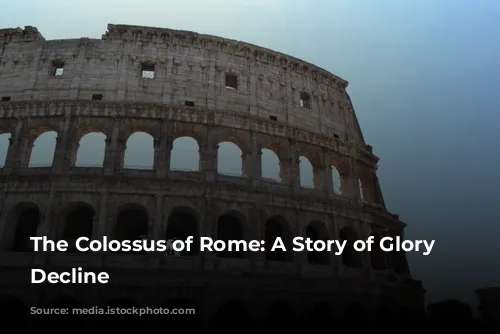
The Gladiators: Warriors of the Arena
The term gladiator stems from Gladius, the short sword used by Roman legionaries. Contrary to popular belief, gladiators were not always forced into combat. Often, prisoners of war were given a choice between slavery and fighting in the arena for a predetermined period, after which they would earn their freedom and a modest fortune. Others were simply individuals from impoverished backgrounds seeking fame and fortune. The profession offered significant financial rewards, popularity, and even romantic attention from women who were willing to pay handsomely for a night with a gladiator.
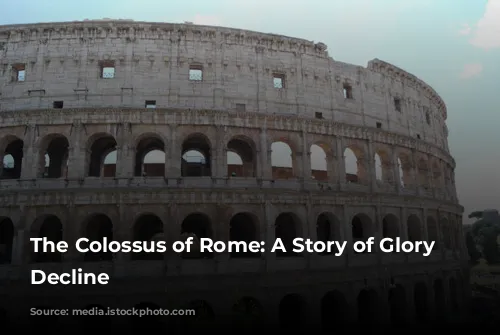
The Rules of the Game: Gladiatorial Combat
There were twelve distinct types of gladiators, each with their own unique weaponry and fighting style. The Retiarius, for instance, used a net, trident, and a knife, while others wielded shields, sickles, or armor. The pairings of gladiators were carefully chosen for dramatic effect.
If a gladiator was wounded, he could appeal for mercy by raising an arm, prompting the emperor to decide his fate. A thumbs-up signified mercy, while a thumbs-down condemned the gladiator to death. Victorious gladiators were rewarded with golden palm leaves and considerable sums of money. Servants, dressed as Charon, the Ferryman of the Underworld, ensured that the wounded were truly dead, The blood of gladiators was highly sought after, believed to have healing properties, particularly for epilepsy and sexual vigor.
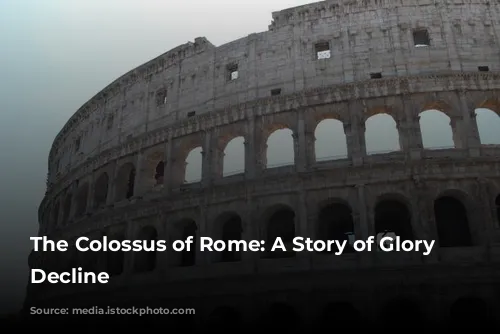
A Society Enthralled by Violence
The Roman public’s love for these brutal spectacles, which we consider to be at the very least violent, is comparable to the modern-day fascination with “splatter” films. The difference lies in the rawness of the reality. The stench of blood, burnt flesh, and wild animals permeated the air during battles and hunts, a pungent aroma that even incense and perfume couldn’t mask.
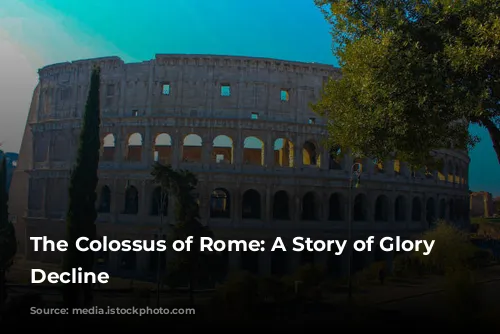
From Glory to Ruin and Redemption: The Colosseum’s Legacy
After the decline of the Roman Empire in the 6th century, the Colosseum fell into disuse, its walls housing confraternities, hospitals, hermits, and even a cemetery. From the Middle Ages onwards, it became one of Rome’s and the world’s most significant landmarks, attracting countless visitors.
Sixtus V initially planned to demolish the Colosseum for urban development, but Benedict XIV intervened, declaring it a sacred monument dedicated to the Passion of Christ. A cross was placed on a pedestal, symbolizing the suffering of Christian martyrs, and marking the starting point of the Stations of the Cross on Good Friday. This act spared the Colosseum from destruction and ensured its preservation. Successive Popes continued to restore and consolidate the structure, preserving its legacy.
Today, for tourists visiting Rome, the Colosseum embodies the ghost of ancient Rome, as Charles Dickens aptly described it, “seeing the ghost of old Rome floating over the places its people walk in.” The Colosseum remains a powerful symbol of the grandeur and enduring legacy of the Roman Empire, a testament to human ambition and the power of time to both elevate and diminish.
